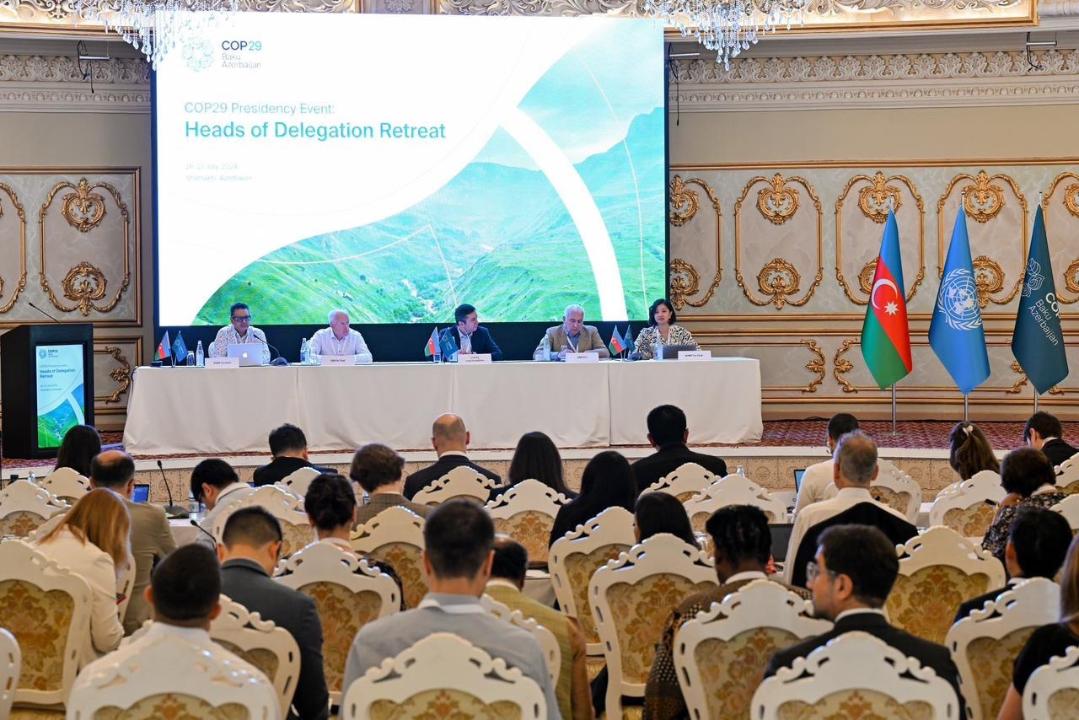ASTANA – A Heads of Delegation (HOD) meeting in Shamakhi, Azerbaijan, on July 26-27, marked a shift in negotiations on the adoption of the New Collective Quantitative Goal (NCQG) on climate finance ahead of the COP29 UN Climate Change Conference in November, reported the Kazakh Ministry of Ecology and Natural Resources on July 31.

Heads of Delegation retreat in Shamakhi, Azerbaijan. Photo credit: gov.kz
In 2009, developed countries agreed to mobilize $100 billion annually by 2020 to support climate action in developing countries. In 2015, under the Paris Agreement, parties agreed to extend this goal to 2025 and to set a new finance goal, starting at a floor of $100 billion per year, for the period after 2025, taking into account the needs and priorities of developing countries.
In the lead-up to COP29, experts and delegates from over 40 countries discussed the remaining issues for the successful adoption of NCQG.
Yalchin Rafiyev, COP29 chief negotiator and Deputy Minister of Foreign Affairs of Azerbaijan, said the adoption of the NCQG on climate finance at COP29 will be a test for the Paris Agreement. He noted that the COP29 Presidency has raised the process to the political level to achieve progress in the negotiations.
According to Shattyk Tastemirova, head of the climate change adaptation department of the Kazakh Ministry of Ecology and Natural Resources, the Shamakhi meeting has made progress in clarifying the NCQG terms.
“In the interim, the text of this goal, which originally exceeded 60 pages, has been reduced to 35. The delegations aimed to identify the financing priority of various countries, as even 35 pages is still extensive. They wanted to streamline it as much as possible, focusing only on the main points. We discussed our preferences and the recommendations voiced by the countries,” said Tastemirova.
Kazakhstan, as a developing country, could qualify for financing on favorable conditions.
“Of course, as a developing country, we noted that financing should be on more favorable terms, emphasizing grants to prevent the country’s debt from increasing,” she said.
“We also noted that there are currently fewer funds allocated for adaptation to climate change. I am not sure why, but perhaps there are fewer project ideas. Therefore, we emphasized that there should be a balanced allocation of 50/50 for both mitigation and adaptation,” added Tastemirova.
There are remaining open issues on adaptation and mitigation measures.
“In general, adaptation is a relatively new area. It was only in 2021 that the concept of adaptation appeared in our environmental code. Prior to that, it was absent from our national legislation. We have worked on improving legislation and included a chapter on climate adaptation. We have identified four priority sectors for ourselves: agriculture, forestry, water management and disaster risk reduction related to climate change,” said Tastemirova.
COP29 chief negotiator Rafiyev also noted that the second main priority of the COP29 Presidency is to fully operationalize Article 6 of the Paris Agreement. This article establishes a carbon crediting mechanism that allows countries to transfer carbon credits earned from the reduction of greenhouse gas emissions to help one or more countries meet their climate targets.


